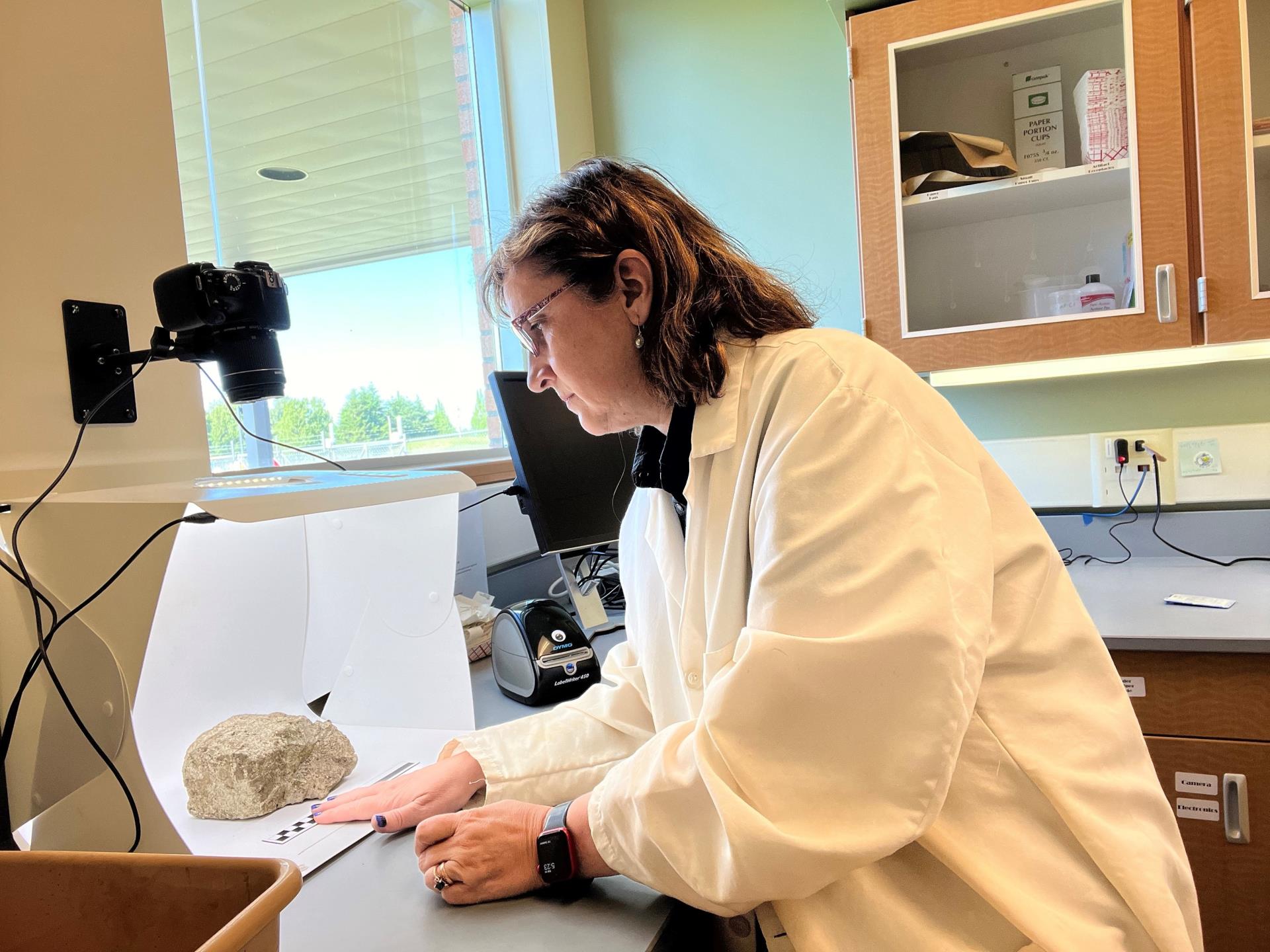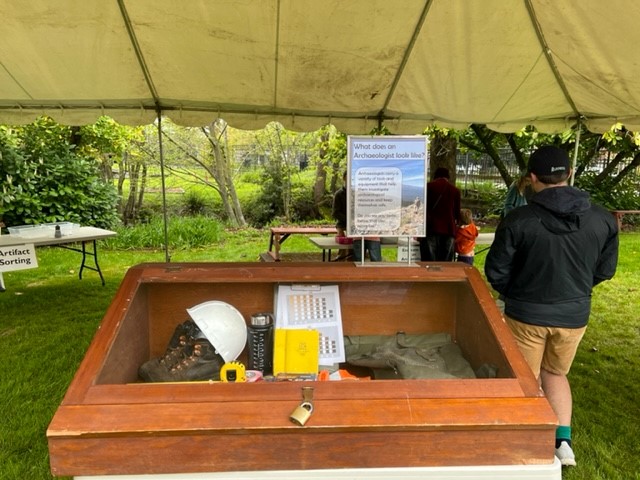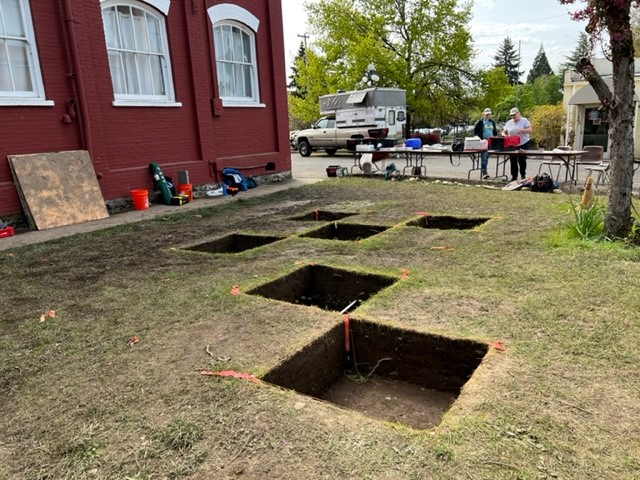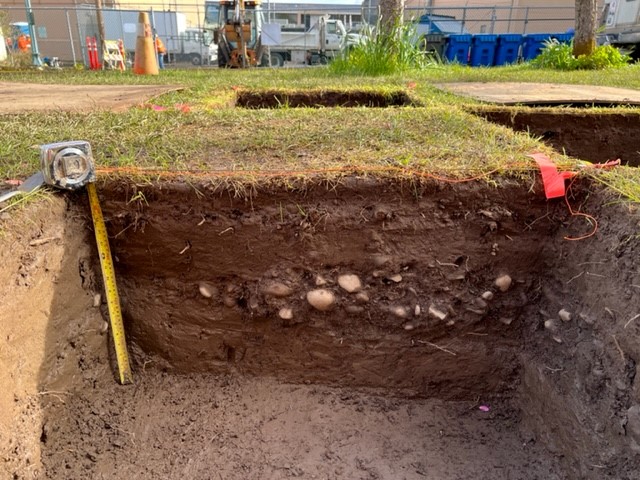 Archaeologists, students and volunteers uncovered more than 3,500 artifacts during an April excavation of sites connected with the former Oregon Indian Mission Manual Labor School and the school’s administration building (later known as the parsonage).
Archaeologists, students and volunteers uncovered more than 3,500 artifacts during an April excavation of sites connected with the former Oregon Indian Mission Manual Labor School and the school’s administration building (later known as the parsonage).
A Preserving Oregon grant awarded to Willamette University from Oregon Heritage is partially funding this project.
The sites are on the grounds of the Willamette Heritage Center (1313 Mill St. SE) and Willamette University (900 State St.). This year’s dig focused on the Mill Street site. Curation of the artifacts is still under way.
Project questions center on:
- Pre-contact Native American settlement and use of the area.
- Early Euro-American settlement of Salem and operation of the Methodist Mission.

 Goals
Goals
Long-term research goals of the project are to better understand the locations of the two buildings and to provide greater context to their original stories.
Methodist missionaries were prolific writers and many texts survive recalling their experiences. However, the lives of the Native American children enrolled in the school have less of a presence in traditional written accounts. We know this was a unique space – a multicultural 
 school whose students had multiple Tribal affiliations.
school whose students had multiple Tribal affiliations.
“Through this archaeological investigation, we hope to provide better understanding of the students’ experiences and lives,” said Kimberli Fitzgerald, Salem’s Historic Preservation Officer, “and develop better ways to acknowledge their presence in, and contribution to, our community history.”
Preliminary surveys
A walking survey and remote-sensing investigation with ground-penetrating radar preceded the April dig. They were under the supervision of Professor Scott Pike of Willamette University.
The survey with ground-penetrating radar was conducted by Briece Edwards and Chris Bailey of the Confederated Tribes of the Grande Ronde. It was used to identify anomalies beneath existing fill and pavement that may correspond to buildings structures or other features illustrated on historic maps or described in historic accounts and helped the archaeologists to determine where to place archaeological test units and shovel test probes.
Excavation
Nine shovel test probes 30 centimeters in diameter, and 10 archaeological test units one meter square, were excavated to sample within both grassy and paved areas of 1313 Mill Street NE, the anticipated site of the Methodist Parsonage. Excavation was supervised by Archaeologist Ross Smith. Field work support was provided by volunteers with the Oregon Archaeological Society and students at Willamette University.
An April 10 public open house at the site helped increase public awareness of the project, as did supplemental information on the City of Salem website, a Salem history Moment on KMUZ radio, and a presentation given about the project to the Willamette Valley Rotary eClub on May 17.
The archaeological testing completed during the month of April answered a number of research questions that were posed early on in the investigations, however the findings also resulted in more questions.
“The investigations helped us to better understand the historic landscape here under the surface,” said Kimberli Fitzgerald. “The artifacts we recovered confirmed that this location was the site of buildings constructed in the late 19th and early 20th Centuries.” Many of the 3,526 artifacts recovered from the site were historic architectural materials (brick, metal, glass, mortar and nails). Here are a few of the findings:
- A large cut stone was recovered within Block A, just below the cobblestone, which could potentially be a foundation stone, although disturbed soils make certainty difficult. Additional questions remain about the exact original location of the Parsonage, which will require further GPR and archaeological testing.
- A historic bottle fragment and large bricks found in another block are most likely associated with the Horseshoe Club Building that was once at the location according to Sanborn Fire Insurance maps.
- Evidence of indigeneous occupation was documented in these archaeological investigations as well, and the team is continuing to work closely with the Confederated Tribes of the Grand Ronde to help answer lingering questions about the landscape and the original indigenous use of this area.
“In particular, we are working with the tribes and the Willamette Heritage Center to develop a research plan so that we can all better understand the original form and use of the landscape here at the time the Parsonage and Indian Manual Labor Training School were constructed,” Fitzgerald said. “We will be continuing this research through 2022, and plan to continue archaeological investigations here in the spring of 2023.”
Curation
Fitzgerald and Smith supervised initial processing and recording of site artifacts by volunteers. The artifacts are temporarily housed at the City’s archaeological lab for initial cleaning and cataloging. Final cataloging and rehousing will be conducted by staff and volunteers at the Willamette Heritage Center, supervised by Curator and Collections Manager Kylie Pine.
